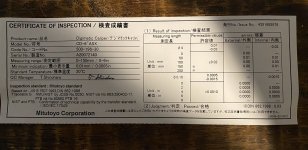Question for our experts here. The virgin cases I’ve measured are 260 rem Peterson and the bullet is Nosler ABLR 142gr. Here are the ES for each measurement.
Brass:
Length : .006”
Neck Diameter: .004”
Neck Thickness: .0035”
Weight: .8gr
Bullet:
Length: .0065”
Diameter: .0035”
Wright: 1.4gr
Are these ES measurements within acceptable tolerance? I’ll be shooting at least 600 yards and upto 1K.
Brass:
Length : .006”
Neck Diameter: .004”
Neck Thickness: .0035”
Weight: .8gr
Bullet:
Length: .0065”
Diameter: .0035”
Wright: 1.4gr
Are these ES measurements within acceptable tolerance? I’ll be shooting at least 600 yards and upto 1K.




